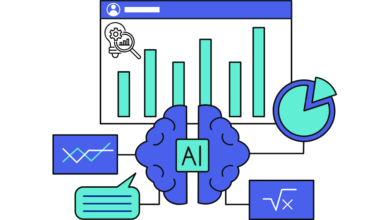
I can’t quite believe it but 2023 is just nine weeks away. I’m sure I’m not the only one who during the depths of 2020’s COVID-19 lockdowns looked longingly towards 2023 as a year when the turmoil of the pandemic would be well-behind us and ‘the new normal’ fully embedded.
What none of us knew then but fully accept now is that this new normal continues to be full of dramatic global instability, albeit no longer down to a mutated virus. Alongside continued economic and political uncertainty, from a technical perspective, it’s also fueled by hybrid working being firmly here to stay, rising frequency of cyber attacks, and increasingly complex regulations around security, finance and ESG.
While there’s no doubt the initial focus for many CTOs in response to these will be to ensure short-term survival and compliance, it’s vital not to lose sight of long-term sustainability and digital transformation. So here are five things I think every CTO should have on their ‘to-do’ list for 2023…
1. Invest in resilience and flexibility to be “ready for anything”
A key lesson from the last couple of years is that being able to adapt quickly to change is the secret to success in challenging times. This is clearly much easier to achieve when you have a cloud first strategy, but despite this two-thirds of IT workloads remain on-premise. Sure, I get it – keeping things on a mainframe make you feel more in control. And that’s important when you’re operating in highly regulated environments. But mainframe-led change and innovation takes months, in a world where every second counts.
It’s also incredibly expensive to scale up to make use of the AI and MP that will enable your operation not just to react, but predict and get on the front-foot. This is why Gartner predicts that by 2027 about half of enterprises will use industry cloud platforms to accelerate more than 50% of their critical business initiatives. For context, last year it was less than 10%. Trust me, you don’t want to be part of the half that don’t make the move – assess your workloads, find secure cloud solutions that you can trust in, migrate your stragglers over quickly and prepare to be able to adapt and evolve like never before.
2. Future-proof your talent
With the pressure to operate more efficiently while meeting increasingly complex customer demands looking to be even bigger than ever, the war on talent isn’t going anywhere. So, it’s no surprise 94% of senior tech leaders say finding and keeping talent has become increasingly important in their roles, making success in today’s hypercompetitive market difficult to come by. Make no mistake, attracting and retaining key talent will be the differentiator of successful enterprises next year.
Unfortunately for those of you who still rely heavily on mainframes, often built on legacy language from the 1950s and ‘60s, this problem is even greater. The old guard who speaks these COBOL languages are well into retirement, with younger developers choosing instead to focus on staying up to speed with newer, sexier and more innovative technologies.
Rather than trying to back-fill your talent gap for dying technologies, the winning solution is to invest in what’s coming next. Get away from legacy languages as quickly as possible and move towards Azure. The good news is that if big players in the market continue to quietly ditch talent in a desperate attempt to cut headcount costs, you can scoop them up to future-proof your long-term success.
3. Cut-costs without compromising continuity
It goes without saying that in uncertain times this phrase is a party of pretty much every conversation. While CIOs expect IT budgets to increase by 5.1% on average in 2023, that’s still lower than the projected 6.5% inflation rate and so spending efficiently will be important, as will providing value. I’m a personally hearing this from a lot of clients, who also talk about the pressure they’re under to reduce costs but without reducing services or strategic commitments i.e. doing more with less.
There are many ways to achieve this of course – re-evaluate vendor contracts, delay tech purchases and cut back on hiring; as well as decommission outdated and redundant infrastructure like expensive mainframes, and move things to the cloud, where you can guarantee a cost reduction of at least fifty percent. A number that would make any CEO smile. And to those of who argue mainframes aren’t that expensive, I say…nonsense.
4. Keep breaking down silos to innovate more effectively
The CTOs and CIOs I speak to everyday tell me this is still a huge priority. Of course, innovation will look completely different depending on your organisation and the sector you work in, but a predictive, immersive, real-time customer experience transcends pretty much all. No matter how mature you are, investment into Superapps, Adaptive AI and preparing for the Metaverse will be key; all of which Gartner has cited as part of its top 10 strategic technology trends for 2023.
Research shows that most will be heavily ploughing their IT budgets into these areas, with software investment chalked up to increase by 11.3% percent in comparison to just 3.4% in data centre systems. The numbers speak for themselves, if R&D is going on one direction, why on earth would you go the other – it’s madness. Staying on the mainframe and an on-premise environment is like a yolk around the neck of business transformation, agility and cost-cutting.
5. Take your seat at the ESG table
Environmental sustainability continues to rise up the ranks of CEO’s strategic priorities. Gartner now has it pegged at number 8, up from 13 in 2020. Senior tech leaders have a clear role to play in supporting this as the ability to access transparent, data-driven insights and measure progress toward objectives makes IT critical to the success of any ESG strategy. As of course does ensuring that the overall IT strategy takes its own environmental impact into account, reducing it as much possible, wherever possible. The best way to take your seat at the ESG table is to ensure your data is in an environment where it’s possible to provide these insights in real-time, using the least energy and finite resources possible.
If the last two, almost three, years of volatility have taught us anything, it’s that those who are able to react faster are the ones who will fare well during challenging circumstances. With at least another 12-18 months of chaos on the horizon, now is the time for leaders to get really honest with themselves and take definitive action around talent, agility, cost-cutting, innovation and sustainability. Don’t and you’re not likely to make it.




